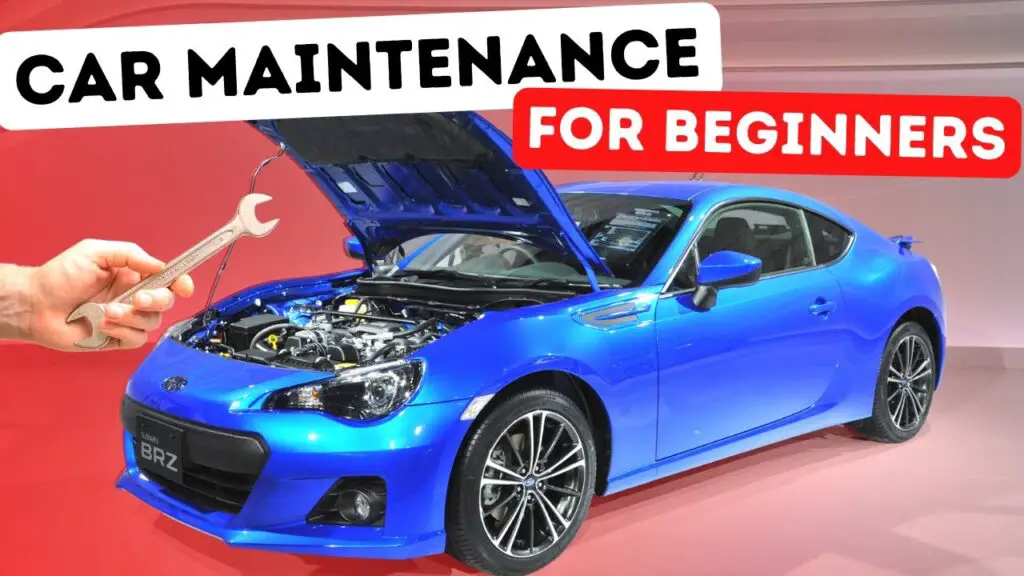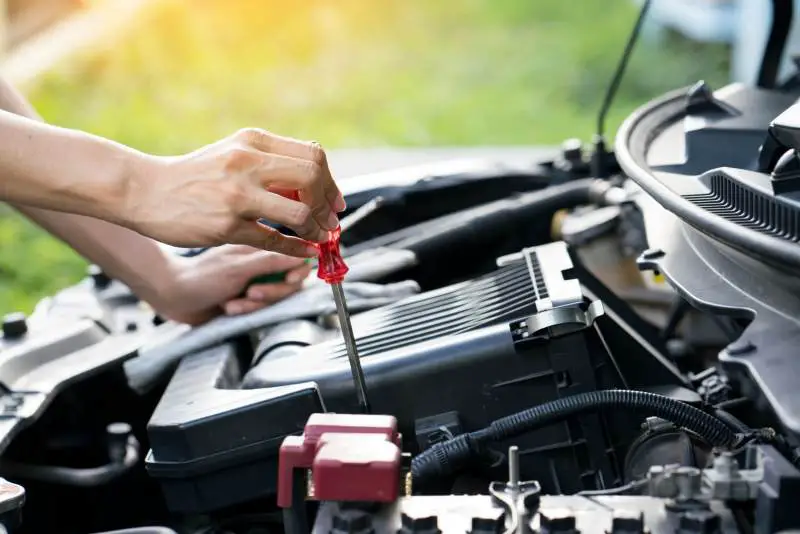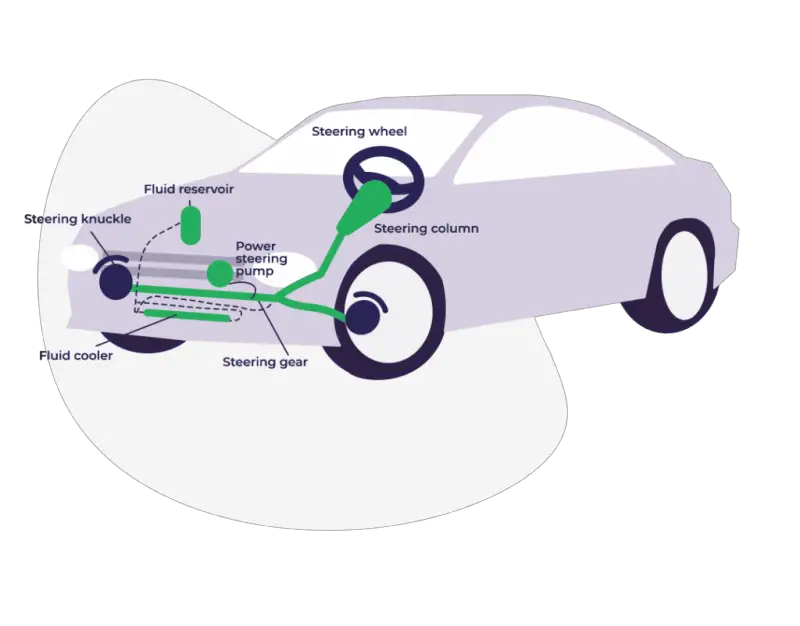Introduction
Hello everyone, welcome to Frugal Dude! Today, I am excited to bring you a beginner’s guide on frugal car maintenance. Whether you are a seasoned frugalist or just beginning your journey towards a more economical lifestyle, this guide is for you.
What is frugal car maintenance?
Frugal car maintenance is the practice of taking care of your vehicle in a cost-effective manner, without sacrificing its performance and longevity. It involves adopting DIY techniques and cost-saving approaches to keep your car in top shape while minimizing expenses.
Why is frugal car maintenance important?
Car ownership comes with a lot of costs, from fuel and insurance to repairs and maintenance. By practicing frugal car maintenance, you can significantly reduce these costs and save a substantial amount of money in the long run. It allows you to have control over your budget and avoid unnecessary expenses that may arise due to negligence or lack of knowledge about car maintenance.
Frugally maintaining your car also helps to prolong its lifespan. Regular maintenance, including simple tasks like oil changes, tire rotations, and regular cleaning, can prevent major issues from occurring. By proactively addressing small problems, you can avoid costly repairs later on.
Moreover, frugal car maintenance promotes self-sufficiency. When you learn the basics of car maintenance, you become less reliant on mechanics for every minor issue. This empowers you to handle simple tasks on your own, saving you both time and money.
In the following sections, we will delve into specific frugal car maintenance techniques, covering topics such as DIY oil changes, tire maintenance, and simple troubleshooting tips. Get ready to boost your frugality and take control of your car’s upkeep!
Stay tuned for our next section where we explore the art of DIY oil changes. Let’s get started on this frugal car maintenance journey together!

Basic Maintenance Tasks
Checking Tire Pressure
One of the most important and often overlooked aspects of car maintenance is checking the tire pressure regularly. Properly inflated tires not only ensure safety on the road but also help improve fuel efficiency. To check the tire pressure, you’ll need a tire pressure gauge. Simply remove the valve cap on each tire, place the gauge on the valve stem, and get the reading. If the pressure is too low, add air until it reaches the recommended level, which can be found in your car’s manual or inside the driver’s side door jamb.
Changing Oil and Oil Filter
Regular oil changes are crucial for the longevity of your car’s engine. Dirty oil can cause unnecessary wear and tear, leading to costly repairs. Changing the oil and oil filter is a relatively simple task that you can do yourself. Start by warming up the engine, then locate the drain plug underneath the car. Place a container to catch the old oil, remove the plug, and let the oil drain completely. Next, remove the oil filter using an oil filter wrench, and replace it with a new one. Finally, reinstall the drain plug, and pour the correct amount of new oil into the engine using a funnel.
Replacing Air Filters
Air filters help prevent dirt, dust, and debris from entering the engine and affecting its performance. Over time, these filters become dirty and clogged, reducing airflow and fuel efficiency. To replace them, locate the air filter housing, which is usually near the engine. Open the housing, remove the old filter, and replace it with a new one. Be sure to check your car’s manual for the correct filter type and size.
Inspecting and Replacing Spark Plugs
Spark plugs play a crucial role in igniting the fuel-air mixture inside the engine. Over time, they can become worn out or fouled, affecting engine performance and fuel efficiency. To inspect and replace spark plugs, locate them under the hood, usually connected to the engine’s cylinder head. Carefully remove the spark plug wires, then use a spark plug socket and ratchet to remove the old plugs. Check their condition and gap, and replace with new ones if necessary. Finally, reconnect the wires securely.
Regularly performing these basic maintenance tasks not only saves you money but also helps ensure the longevity and reliability of your car. Remember, with a little time and effort, you can become a frugal car maintenance expert!

Extended Maintenance
Flushing and refilling coolant
One important aspect of frugal car maintenance is ensuring your coolant is regularly flushed and refilled. Over time, coolant can become contaminated and lose its ability to effectively cool the engine. By flushing the coolant system and refilling it with fresh coolant, you can prevent engine overheating and extend the life of your car’s cooling system. This simple DIY task typically requires draining the old coolant, flushing the system with water, and then adding new coolant. It’s important to follow your car’s specific instructions and use the recommended coolant type for optimal results.
Replacing fuel filter
Another maintenance task that can save you money in the long run is regularly replacing your fuel filter. The fuel filter plays a crucial role in preventing dirt and other contaminants from reaching your engine, which can cause damage and reduce fuel efficiency. By replacing the fuel filter at recommended intervals, you can ensure that your engine receives a clean and consistent fuel supply, leading to improved performance and a longer lifespan for your vehicle. Remember to consult your car’s manual or research the specific steps required for your make and model.
Checking and replacing brake pads
Properly functioning brakes are essential for your safety and the safety of others on the road. Regularly inspecting and replacing worn brake pads is a frugal way to maintain your car’s braking system. By paying attention to signs of wear, such as squeaking or reduced brake response, you can catch issues early on and avoid more expensive repairs down the line. Replacing brake pads typically involves removing the wheel, removing the old brake pads, and installing new ones. However, it’s important to note that this task may be more complex depending on your vehicle’s braking system, so be sure to do your research or consult a professional if necessary.
Inspecting and replacing drive belts
Drive belts, such as the serpentine belt, play a crucial role in powering various components of your car, including the alternator and air conditioning compressor. Regularly inspecting and replacing worn or damaged drive belts is an important part of frugal car maintenance. Over time, drive belts can become stretched, cracked, or worn, which can lead to decreased performance and potential breakdowns. Inspecting and replacing drive belts typically involves loosening the tensioner, removing the old belt, and installing a new one. As with any maintenance task, consult your car’s manual for specific instructions and be cautious when working near moving parts.
Remember, taking a proactive approach to car maintenance can not only save you money in the long run but also prevent expensive repairs and breakdowns. By flushing and refilling the coolant, replacing the fuel filter, checking and replacing brake pads, and inspecting and replacing drive belts, you can extend the life of your vehicle and keep it running smoothly. Don’t be afraid to do your own research, ask for advice, and seek professional help when needed to ensure the best outcome for your frugal car maintenance efforts. Happy maintaining!

Advanced Maintenance
Now that you have mastered the basics of frugal car maintenance, it’s time to delve into some more advanced techniques. Don’t worry if you’re a beginner – with a little bit of patience and the right tools, you’ll be able to tackle these tasks and save even more money in the long run.
Cleaning and Greasing Battery Terminals
One often overlooked aspect of car maintenance is the proper care of your battery terminals. Over time, corrosion can build up on these terminals, leading to poor electrical connections. To prevent this, it’s important to clean and grease your battery terminals regularly. Start by disconnecting the negative terminal, followed by the positive terminal. Use a battery terminal cleaner to remove any corrosion, and then apply a thin layer of dielectric grease to the terminals before reconnecting them. This will help ensure a clean and secure connection, extending the life of your battery.
Replacing Suspension Components
If you’re experiencing a bumpy ride or noticing excessive sway in your car’s handling, it may be time to replace some suspension components. This can include items like shocks, struts, or control arm bushings. While this may sound like a daunting task, it’s actually fairly straightforward with the right tools and a little bit of know-how. Consult your car’s manual or look for online tutorials specific to your make and model to guide you through the process. By doing this maintenance yourself, you can save a significant amount of money on labor costs.
Inspecting and Replacing Wheel Bearings
Wheel bearings play a crucial role in the smooth operation of your car’s wheels. Over time, these bearings can become worn out or damaged, leading to noises or vibrations while driving. To inspect your wheel bearings, raise your car off the ground and wiggle each wheel back and forth. If there is excessive play, it’s time to replace the bearings. This task requires a specialized tool called a bearing puller, so it’s best to consult a professional if you’re unsure or uncomfortable tackling this yourself. However, with a little bit of research and the right tools, you may be able to save money by replacing the wheel bearings on your own.
Checking and Replacing CV Joints
CV joints, or constant velocity joints, are responsible for transferring power from the engine to the wheels while allowing for smooth and flexible movement. Over time, these joints can wear out, resulting in clicking or clunking noises when turning. To inspect your CV joints, visually look for any signs of damage or leaking grease, and listen for any unusual noises while driving. If you suspect that your CV joints are worn out, it’s best to have them inspected and replaced by a professional as they require specialized tools and knowledge.
By mastering these advanced maintenance techniques, you’ll not only save money on costly repairs, but also gain a deeper understanding and appreciation for your vehicle. So grab your toolbox and get ready to become a frugal car maintenance expert!
Frugal Tips and Tricks
Maintaining a car can be expensive, but with some frugal tips and tricks, you can save a significant amount of money while still ensuring your vehicle remains in good condition. In this section, I will share some DIY methods and cost-saving techniques that will help you achieve frugal car maintenance.
Using household items for cleaning
Instead of spending money on expensive car cleaning products, consider using household items to keep your car looking shiny and spotless. For instance, a mixture of water and vinegar can be used as a window cleaner, while baking soda works wonders for removing stubborn stains on upholstery. Additionally, repurposing old toothbrushes or sponges can help you clean hard-to-reach areas without spending extra on specialized tools.
Optimizing fuel efficiency
Fuel costs can add up quickly, but there are simple ways to optimize your car’s fuel efficiency and save money. Basic maintenance tasks such as regular oil changes, proper tire inflation, and replacing air filters can improve your car’s gas mileage. Additionally, adopting fuel-efficient driving habits, such as avoiding rapid acceleration and maintaining a consistent speed, can also help you get the most out of each gallon of gas.
Extending the life of car parts
Being proactive about car maintenance can help prolong the life of various components, ultimately saving you from costly repairs or replacements. Simple tasks like checking tire pressure regularly, keeping up with fluid changes, and following the manufacturer’s recommended maintenance schedule can go a long way in preventing major breakdowns. Remember, a well-maintained car is less likely to encounter costly problems down the road.
Negotiating maintenance costs
When it comes to professional car maintenance, don’t be afraid to negotiate costs. Shop around for different mechanics and obtain multiple quotes. If a mechanic knows you are price conscious, they may be willing to offer discounts or find more cost-effective solutions. Additionally, staying informed about your car’s needs and understanding the average costs of common repairs can help you avoid overpaying for services.
By following these frugal tips and tricks, you can save money on car maintenance without compromising the quality and longevity of your vehicle.
Tools and Equipment
When it comes to frugal car maintenance, having the right tools and equipment is essential. Whether you’re a beginner or more experienced, having a well-stocked toolbox can save you both time and money in the long run. In this section, I will highlight some of the essential tools for basic maintenance, as well as optional tools for those looking to tackle more advanced projects. Additionally, I will touch on the importance of safety equipment when working on your car.
Essential tools for basic maintenance
To start off on the right foot with frugal car maintenance, there are a few tools that you absolutely need in your arsenal. A set of wrenches and sockets in various sizes will allow you to handle most basic repairs. A quality pair of pliers, both standard and needle-nose, is also a must-have. Don’t forget to invest in a good quality screwdriver set, including both flathead and Phillips head screwdrivers. Finally, a jack and jack stands are essential for lifting your car when necessary.
Optional tools for advanced maintenance
If you’re feeling more ambitious and want to take on more advanced maintenance tasks, there are a few additional tools that may come in handy. For example, investing in a multimeter can help you diagnose electrical issues in your car. A torque wrench is also useful for tightening bolts to the proper torque specification. Additionally, a set of car ramps or a creeper can make it easier to access hard-to-reach areas of your vehicle.
Safety equipment for DIY maintenance
Last but certainly not least, safety should always be a priority when tackling your own car maintenance. You should have a good pair of safety glasses or goggles to protect your eyes from debris and chemicals. Additionally, a sturdy pair of work gloves will help protect your hands from cuts and abrasions. Don’t forget a fire extinguisher in case of emergencies, as well as a first aid kit for any minor injuries that may occur.
By ensuring you have the right tools and equipment, you’ll be well-equipped to handle frugal car maintenance on your own. Whether you’re performing basic repairs or tackling more advanced projects, having the necessary tools will allow you to save money on expensive repairs. Just remember to prioritize safety and wear the appropriate protective gear. Happy DIY-ing!

Finding Reliable Information
One of the most important aspects of maintaining your car frugally is to ensure that you have reliable information at your disposal. With so much information available online, it can be overwhelming to sift through the clutter and find accurate advice. However, by utilizing reputable online resources, seeking advice from car enthusiasts, and consulting the manufacturer’s guidelines, you can arm yourself with the knowledge needed to effectively maintain your vehicle without breaking the bank.
Using reputable online resources
When it comes to finding credible information about frugal car maintenance, there are numerous reputable online resources available. Websites such as frugaldude.org, where I focus on providing relevant data about frugal lifestyle, can be a valuable source of information. Additionally, trusted automotive websites and forums, such as Edmunds and CarTalk, often have dedicated sections or forums specifically for car maintenance tips and advice. These sources often have articles, tutorials, and forums where you can find answers to your specific questions or concerns.
Seeking advice from car enthusiasts
Another great way to gather reliable information about frugal car maintenance is to tap into the expertise of car enthusiasts. Local car clubs, online car enthusiast forums, and social media groups centered around automobiles can be a treasure trove of valuable insights and experiences. By engaging with experienced enthusiasts, you can learn from their firsthand knowledge and benefit from their tips and tricks for maintaining your car on a budget.
Consulting manufacturer’s guidelines
In addition to online resources and car enthusiasts’ advice, it is essential to consult the manufacturer’s guidelines for specific maintenance recommendations. The manufacturer’s guidelines are designed to ensure the longevity and optimal performance of your vehicle. By following these guidelines, you can perform the necessary maintenance tasks at the recommended intervals, helping you avoid costly repairs in the long run. The owner’s manual that came with your car is an excellent starting point, providing valuable information on recommended maintenance schedules, fluid levels, and other essential maintenance tasks.
By utilizing reputable online resources, seeking advice from car enthusiasts, and consulting the manufacturer’s guidelines, you can acquire reliable information to effectively maintain your car in a frugal manner. With this knowledge in hand, you can confidently tackle maintenance tasks, saving not only money but also extending the lifespan and enhancing the performance of your vehicle. So, take the time to research, ask questions, and stay informed to become a savvy frugal car owner.

Common Car Issues and Solutions
Identifying common car problems
As a beginner in car maintenance, it’s important to be able to identify common car issues to prevent them from turning into major and costly repairs. One common problem is a slow-starting engine. If you find that your car takes longer than usual to start, it could be due to a weak battery. Another common issue is a vibrating steering wheel, which could indicate problems with the tire alignment or suspension. Additionally, if you notice any unusual noises, such as squealing or grinding, it may be a sign of worn-out brakes or a faulty transmission.
Addressing issues before they worsen
To avoid spending unnecessary money on car repairs, it is crucial to address any issues as soon as they arise. Regularly checking fluid levels, including oil, coolant, and brake fluid, can prevent engine damage and overheating. It is also advisable to keep an eye on the condition of your tires, making sure they are properly inflated and have sufficient tread depth. Ignoring these maintenance tasks can lead to more significant problems and higher repair costs down the road.
Solutions for common car maintenance challenges
When it comes to frugal car maintenance, there are several DIY solutions that can save you money. For instance, changing the engine oil and oil filter regularly can help prolong the life of your engine and improve fuel efficiency. Performing routine inspections of belts and hoses can also prevent unexpected breakdowns. Additionally, learning basic car maintenance skills, such as changing a flat tire or replacing brake pads, can save you a trip to the mechanic.
By being proactive and addressing issues early on, you can minimize the chances of major car problems and costly repairs. Remember that proper car maintenance doesn’t have to break the bank, and with a little bit of knowledge and effort, you can keep your car running smoothly and frugally for years to come.
Saving Money on Car Repairs
When it comes to car maintenance, keeping costs down is a top priority for many of us. Repairs can quickly add up and strain our wallets, but with a little knowledge and some DIY skills, you can save a significant amount of money. In this section, I will share some tips and tricks for saving money on car repairs.
Performing DIY Repairs
One of the most effective ways to cut costs on car repairs is by performing them yourself. Now, I understand that not everyone is an expert mechanic, but there are several basic repairs that even beginners can handle. Simple tasks like changing the oil, replacing the air filter, or changing a flat tire can easily be done at home with the help of online tutorials and basic tools. By investing a little time and effort upfront, you can save a substantial amount of money in the long run.
Comparing Prices at Different Repair Shops
If you’re not comfortable with DIY repairs or if the task at hand requires professional expertise, it’s essential to shop around and compare prices at different repair shops. Prices can vary significantly, so it’s worth calling a few local shops and asking for estimates. Don’t forget to inquire about any warranties they offer on their repairs and whether they use new or refurbished parts. By doing your research and finding a trusted, affordable shop, you can ensure that you’re getting quality service at a fair price.
Taking Advantage of Warranty Coverage
Lastly, don’t forget to leverage any warranty coverage you may have. Many major car components, such as the engine or transmission, come with extended warranties that can save you a significant amount of money if they malfunction. Before paying out-of-pocket for a repair, check your warranties and see if the cost can be covered. Additionally, some repairs may be covered by the car manufacturer’s warranty, so it’s always worth checking with your dealership.
By following these tips, you can save money on car repairs without compromising on the quality of service. Whether you’re performing DIY repairs, comparing prices at different repair shops, or utilizing warranty coverage, being proactive and informed can make a significant difference in your wallet. Remember, taking care of your car doesn’t have to break the bank!
Conclusion
Maintaining your car can be an expensive endeavor, but with a frugal mindset and a bit of do-it-yourself (DIY) knowledge, you can save a significant amount of money. In this beginner’s guide, I have discussed the importance of frugal car maintenance, the benefits of DIY car maintenance, and provided tips for starting your frugal car maintenance journey.
The importance of frugal car maintenance
Keeping your car in good condition is crucial for its longevity and performance. Regular maintenance helps prevent costly repairs and breakdowns in the future. By following a frugal approach, you can save money without compromising on the quality of your car’s upkeep. Frugal car maintenance involves being mindful of your spending, avoiding unnecessary expenses, and finding cost-effective solutions.
Benefits of DIY car maintenance
One of the biggest advantages of DIY car maintenance is the money you can save. By learning how to perform basic tasks such as changing the oil, replacing the air filter, or checking tire pressure, you can avoid the costly labor fees charged by mechanics. Additionally, DIY car maintenance allows you to have more control over your vehicle and gain a better understanding of how it works.
Tips for starting your frugal car maintenance journey
If you’re new to frugal car maintenance, there are a few steps you can take to get started. First, invest in a basic set of tools that you will need for most maintenance tasks. This will save you money in the long run by avoiding unnecessary trips to the hardware store. Second, educate yourself by watching tutorial videos or reading DIY car maintenance guides. This will empower you to tackle more complex tasks with confidence. Finally, start small and gradually build up your skills. Begin by performing simple tasks like checking fluid levels and gradually work your way up to more challenging repairs.
In conclusion, frugal car maintenance is a practical and cost-saving approach that any beginner can adopt. By taking the time to learn basic maintenance tasks and being conscious of your spending, you can keep your car in great condition without breaking the bank. So why not give it a try and embark on your frugal car maintenance journey today?
(Note: This article was written by the frugaldude.org team. Always consult a professional mechanic for specific car maintenance advice.)
